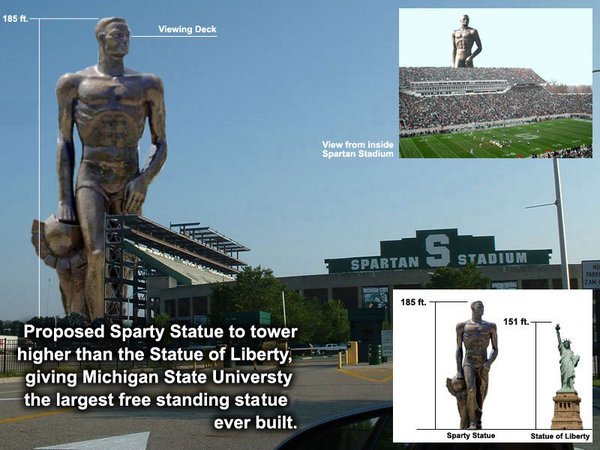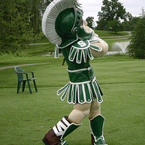-
Posts
7533 -
Joined
-
Last visited
Content Type
Profiles
Forums
Store
Downloads
Recruiting - 2020
2019-2020 Football Season
Football
Entertainment
Sports
News and Business
Cloak Room
Transfer Portal
Recruiting
Events
Posts posted by Wally Fairway
-
-
11 hours ago, ztejas said:
Who the fuck is Sam Burns?
leader in the clubhouse
like a rabbit in a distance race
on Thursday, give it some time -
-
Just glancing at shot tracker, thru 10 holes, looks he's hit 5-6 fairways (and way wide on a couple) so better but still not where it should be
-
4 hours ago, Blotto said:
Pretty much. I expect to get fucked now and again, but thats the price of admission to the penny stonk world. Not too many stocks on the NYSE, NASDAQ etc... going from .0025 to .1 in a couple of months, so you take the good with the bad.
that is the truth - and the fact of the matter is to take something off the table when you get that runup to give you investable cash in the next couple of opportunities that are still at .005 or less, and hold onto some of the first investment to see if it can run to .25 or dare I say it $1.00 (don't even think about finding another ALPP - because that shit is legendary and chasing it will keep you up nights)
also as a cautionary tale for those that follow, but are later to the game, it is a different beast when you invest in that .0025 stock once it gets to .1 or .2 because there are likely lots of people looking to flip that once it hits another milestone.
I am not a diamond hands guy, take some wins, let some ride - but don't leave it all on the table hoping it double and then redoubles again-
 1
1
-
 1
1
-
-
2 hours ago, gsoda3 said:
i think you guys were in UAVS at one point. there's a hit piece out on it.
https://www.bonitasresearch.com/company/ageagle-aerial-systems-nasdaq-uavs/
I was in and out of that in mid 2020, and remembering back to that episode of pump and dump - the HQ were a small building in the middle of nowhere and if I recall correctly there website was all about Ag usage for drones. Now they are a manufacturer of 3 types of drones .... seems like a reach to me.
Glad I made a few bucks, and even more glad that I'm out of it as it is likely to come crashing back down-
 1
1
-
-
1 minute ago, Coelenterate Fuccboi said:
I love buying dips but there are so damn many to choose from right now, and not enough cash in my account.
Yup - I've been pretty much fully invested, and don't really want to sell anything right now to raise funds and guess where the better place is to buy
-
12 minutes ago, Coelenterate Fuccboi said:
It looks like someone declared war on my portfolio.
I've looked at my watchlist and refuse to go to my account and see how bad it looks; I'm trying to convince myself that this is just another bump in the road and not a detour in the journey.
-
33 minutes ago, Hank_Hill said:
How do these uplistings tend to work typically? Haven't been a part of one. Twitter announcement followed by magically appearing on the public market?
QuoteWhile it generally takes four to six weeks to process a listing application, this time frame is variable and may be shortened considerably, if the application raises no issues and the company responds quickly to Staff comments. Week 1. Company submits application for listing and Nasdaq Listing Qualifications Staff begins its review. Weeks 2-3. Staff completes its preliminary review and prepares comment letter. Weeks 3-4. Company addresses any issues raised by Staff. Weeks 5-6. Staff completes their review and company is approved for listing
From this NASDAQ presentation - https://listingcenter.nasdaq.com/assets/initialguide.pdf
So what is normal doesn't really matter; what does right now (to me) is if there were issues and how were they addressed. ALPP has been very good with PR about positive events, if there is a delay they need to be in front of that PRwise as well and have an explaination or reason
-
to keep this all in perspective - even after the shitty last few days, it is nice to look at my daily tracker and realize I'm "only" up almost 15% for the month,
Don't succumb to recency bias-
 2
2
-
-
23 minutes ago, satyanash said:
I watched that tie breaker in the third and was shocked when I saw Tsitsipas won the 4th set; Nadal struggled in the tiebreaker, missing 2 overheads then losing on a missed backhand wide.
-
I just want to throw this out there, as we sift our way through a shitty couple of days or maybe more, that unless you are looking to actively trade penny stock that this is longer term investing and that there will be down days. Sure it looked easy in January and the first week of February but that isn't how the market works long term.
IMO - what @RCRanger03 has shown and done , is that with some DD you can pick some penny companies with potential and ride them up. But to do that you have to do a couple of thing:
- recognized that not all of them will be winners, you will lose money on some of them
- take a portion of your gains off the table as they rise (at least get most of your initial investment back when you can), this is what leads to "free shares"
- also know that you won't be right, but don't play the market by looking in your rearview mirror. We've all sold things that we wished we'd held, and held things we wished we'd sold.
- finally don't panic sell into a market downturn, markets go up and down (but your stock will only go up), but don't confuse market movement for company news/movement (as shown with FPVDRCR - would love to get your 2¢ on this?
-
 4
4
-
 3
3
-
-
So it appears FPVD is becoming a subsidiary of Red Diamond, maybe not wholly owned but 99.988% of the shares are controlled in the debt swap
Follow up - just read RCR's comment. so the 7 trillion shares are, apparently, subordinated to the SRAX shares. Still, looks like there is control outside of FPVD mgmt/public shareholders. This type of thing happens in penny-stonks, but still 7 trillion shares seems like it is a lot .... a fucking lot of shares.
I'm gonna guess there will be a reverse split on this - say in the range of 1:1,000,000 or more -
4 hours ago, tx 3 putt said:
He’s creeping back in the world rankings. #62
Only a few more spots to qualify for the WGC "Rich Getting Richer" events - top 64 at WGC Austin (as of March 15), top 50 in the other WGC events
-
8 minutes ago, Coelenterate Fuccboi said:
Schwab’s interface is terrible. I trade OTC there but use TDA’s basic app for level 2 information and my watchlist, TOS for charts.
Agree - Schwab's system sucks at showing information on quotes below $0.01, you can trade them but not have easy access to history or quotes.
-
I'm looking to buy into some of this momentum, unfortunately I'm all stonked up and will need to sell/free up some funds to make additional stonk picks
@Hefeweizen GTC orders are your friend, if you cannot watch the markets on a regular basis. Set it and forget it, except when you check in and can revise your orders.
-
On 2/12/2021 at 6:06 PM, Wally Fairway said:
3 day weekend for stonks - I hate this, need to see what my stonks are doing
21 hours ago, Wally Fairway said:Sunday night no premarket disappointment is real
Ahhh - only just over 15 hours until the exchanges open, and futures/pre-market are up for now
-
20 hours ago, slorch said:
Not many UH/ NCState mentions. Were you fuckers alive? If you rooted for UH or Phi Slamma Jamma and Guy Lewis... it was just devastating.
That one should have been on my list - I moved to Houston in 1981, and if you tried you could get tickets to Hofheinz and go see Phi-Slamma-Jamma, what a show. After the Cougars ran Louisville off the court in the Final Four game, everyone thought the title was coming back to Houston.
NC State winning with 54 points just shows how sports can give you crazy outcomes, hell UofH scored 58 in the second half against Louisville.Along with the '86 Astros loss to the Mets, the Oilers losing to the Bills, Thomas Hearns 1981 loss to Sugar Ray Leonard and too many MSU Spartan football games to list
-
23 minutes ago, WithoutAClue said:
AMYZF at the Frankfurt Exchange peak today: 1.74 euro = $2.11
It closed somewhere around 1.44 euro = $1.75
thanks - I was too lazy to do currency conversion
-
113 in Vegas and -17
my son can beat that 126 in Kuwait City last August and -18
he was stationed in Iraq, said he got used to 115 but that 125 was too hot-
 1
1
-
-
-
I'm gonna say things are getting much better when there is bitching about a 3rd place finish instead of missed cuts
-
On 2/12/2021 at 6:06 PM, Wally Fairway said:
3 day weekend for stonks - I hate this, need to see what my stonks are doing
Sunday night no premarket disappointment is real
-
 1
1
-
-
On 4/30/2018 at 12:24 PM, Wally Fairway said:
I am, personally, trying to ruin the greeting card industry.
For birthdays, valentines, mothers day, etc. instead of buying cards I just to a couple of stores, find a few cards that I like, whip out my phone and take pictures of the cards.
Then when said day arrives, I text the photos to my family; I also send my adult kids pictures of birthday cakes, and tWife gets pictures of roses, candies and other things that cost too much and either spoil or we don't really need.FWIW - I am waiting to be kicked out of a store for my shenanigans, but fuck $4-$6-$9 for some stupid card.
Mrs Fairway broke the rules today and gave me an actual valentines card; one of those 3-D cards that pop up when you open them. That fucking thing must almost $10, but it was nice. But y'all will be proud of me, I said thanks and then later texted her another photo of a card - one I saw last week when I was in the store.
-
Just doing Jordan things
-
 1
1
-
 1
1
-



Which City Is The Next Austin?
in Business and Markets
Posted
Other, random names, to consider
Chattanooga TN
Lexington KY
Grand Rapids MI
Spokane WA
major universities nearby, on major hwy, with in an few hour of major cities,
places it won't be - Flint, Beaumont (Pt Arthur, Orange), Gary Indiana, anywhere in New England,